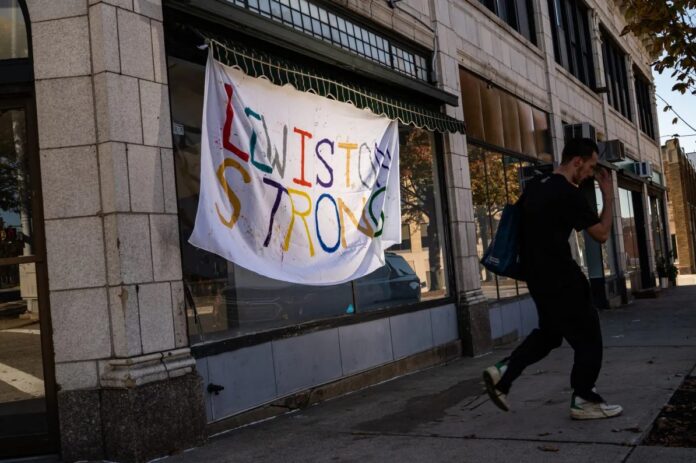As we grapple with the aftermath of another horrific mass shooting, this time in Lewiston, Maine, the echoes of national outrage are a chilling reminder of the blood-stained tapestry of gun violence in America. The tragedy that unfolded on October 25, where 18 souls were taken and 13 others injured at the hands of a troubled Army reservist, brings us to a standstill yet again.
This wasn’t just a random act of violence; it was a cascade of missed signals and systemic failures. Robert Card, the 40-year-old behind the massacre, practically had the words “dangerously troubled” flashing in neon above his head for months. Reports of him hearing voices, paranoia, violent outbursts, and even explicit threats to “shoot up” his Army base were the writing on the wall.
Some family members and Army officials did more than whisper their worries—they shouted them. After a psychiatric evaluation in an Army hospital led to directives against him possessing weapons or ammunition, we should ask, why was he still able to legally purchase firearms up until his rampage?
Maine’s “yellow flag” law, which, on paper, allows for the removal of firearms from someone deemed dangerous, clearly didn’t activate in time. The question we’re left with is: Why did the system fail so tragically? And why, after all the alarms, did the Sagadahoc County Sheriff’s Office cancel an alert on Card, merely a week before the massacre?
The conversation in the wake of such events often veers into the murky waters of mental illness. But let’s set the record straight—mental illness shouldn’t be the scapegoat for mass shootings. While Card’s actions point to someone in the depths of mental anguish, we cannot simplify the narrative to “mental illness equals mass shooter.”
The misconception that mass shooters are just “crazy people” who snap does a disservice to the complexity of this issue and the patterns that can be discerned—and interrupted—by thorough behavioral assessment. Most mass shooters aren’t clinically diagnosed with mental illness. Yes, some exhibit certain psychiatric or neurological symptoms, but very few mass shootings stem from psychosis or severe mental illness.
As someone who has delved deep into the patterns of such perpetrators for my book “Trigger Points,” I can tell you that the problem is nuanced. There are behaviors that signal an escalation towards violence, and these moments are opportunities for intervention.
I recently discussed the intricate relationship between mental health and mass shootings on Slate’s “What Next” podcast with Mary Harris. We dove into how behavioral threat assessments could prevent tragedies, like the one in Lewiston, filled with forewarnings.
So, where does this leave us? In the throes of yet another post-massacre analysis, clear warning signs were dismissed, and where laws and regulations designed to prevent such catastrophes were inadequately applied.
In the outcry that follows, let’s not settle for the narrative that simplifies the motives of mass shooters to just mental health issues. Instead, we must challenge our systems—gun control, mental health services, law enforcement response—to work in harmony to stop the next tragedy.
The Maine Massacre, as it will be known, is not just about one man’s unraveled psyche; it’s about our collective failure to address the complexities at the intersection of mental health and gun violence. It’s a failure we’ve seen too often and one that we have the tools to prevent—if only we have the will to use them.



